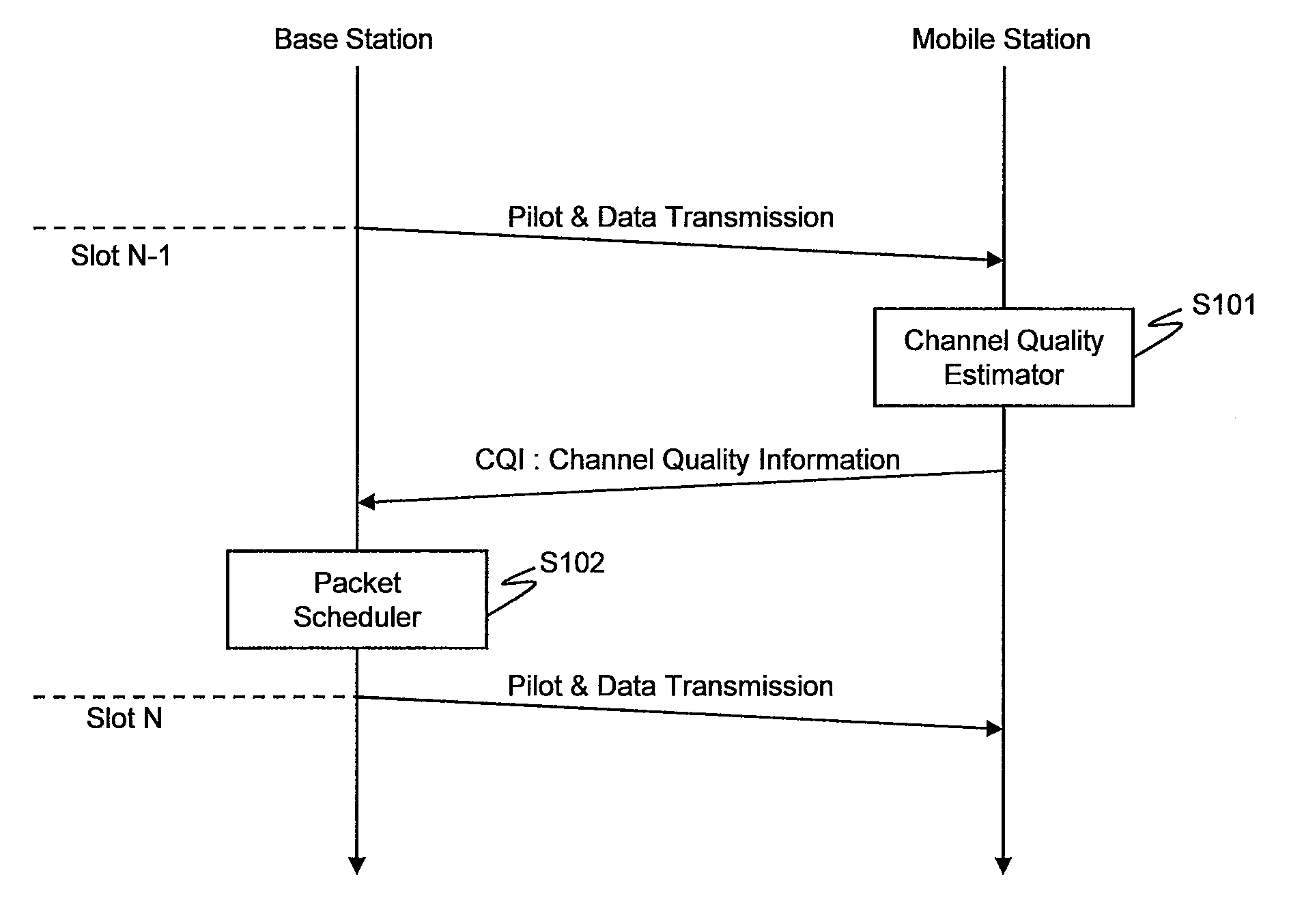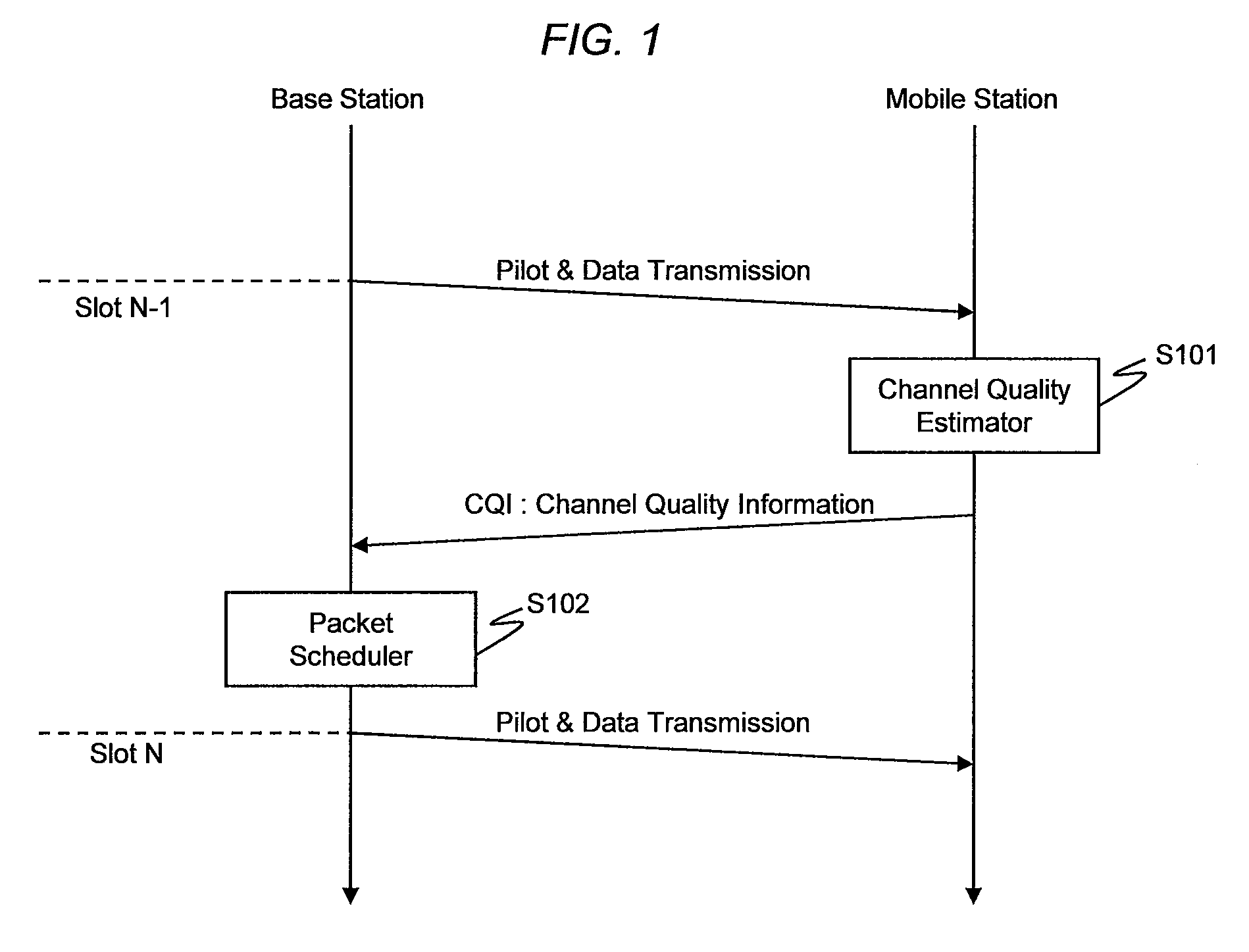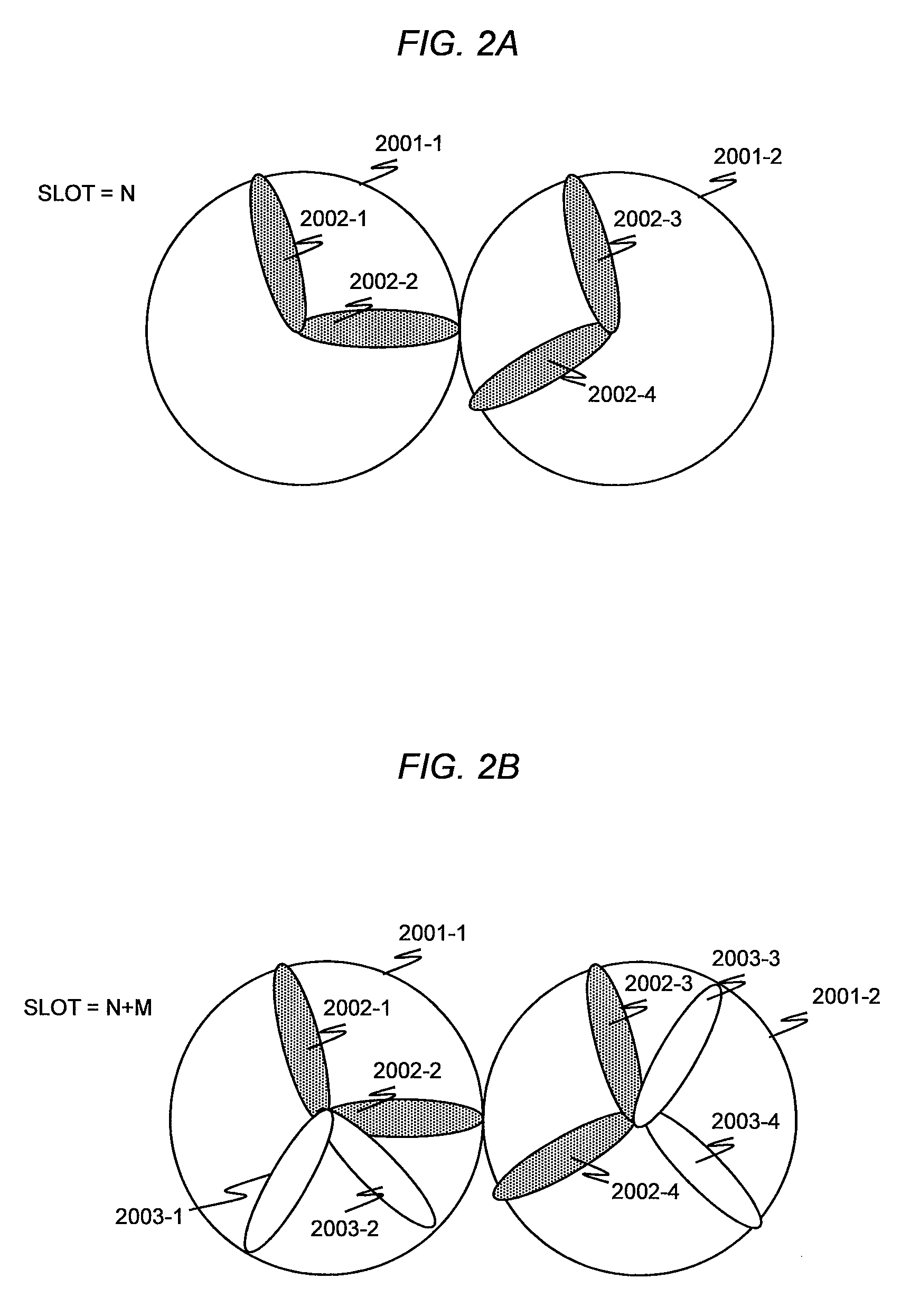Wireless communication system, radio base station apparatus and radio terminal apparatus
a technology of radio base station and radio terminal, which is applied in the direction of multiplex communication, wireless commuication services, polarisation/directional diversity, etc., can solve the problem of easy cqi error, achieve the effect of improving frequency utilization efficiency, improving frequency utilization efficiency of mobile stations located at cell edges, and improving precision
- Summary
- Abstract
- Description
- Claims
- Application Information
AI Technical Summary
Benefits of technology
Problems solved by technology
Method used
Image
Examples
first embodiment
[0084]FIG. 8 represents a first embodiment mode related to an estimation directional beam decision, according to this invention.
[0085]In the first embodiment mode, a description will be made of an estimation directional beam decision in a case where the base station is a switched beam base station.
[0086]A beam selector 1101 selects a fixed beam which is utilized as an estimation directional pattern and a detection directional pattern succeeding to the estimation directional pattern by several time slots among the fixed beams held in a fixed beam buffer 1103 by the base station, and then, notifies a beam notification unit 1102 of a beam identification number thereof.
[0087]In order to select a beam direction, information held in the base station is read. Specifically, the various sorts of information are read from the queue buffer 1001a, the feedback buffer 1001b, and the DOA buffer 1001c. It should also be noted that reading of the above-described various information is not necessari...
second embodiment
[0092]FIG. 9 represents a second embodiment mode related to an estimation directional beam decision, according to this invention.
[0093]In the second embodiment mode, a description will be made of an estimation directional beam decision in a case where the base station is a base station which outputs an arbitrary directional beam pattern.
[0094]A direction decision unit 1104 decides both a beam direction and a null direction of a directional beam generated by the beam generator 1105 for every beam identification number, and then, notifies the beam generator 1105 of the decided beam and null directions. In order to decide a beam direction, information is held in the base station and then is read. Specifically, the various sorts of information are read from the queue buffer 1001a, the feedback buffer 1001b, and the DOA buffer 1001c.
[0095]Similarly to the first embodiment mode, it is conceivable that a difference may appear in frequency utilization efficiencies, depending upon direction...
PUM
 Login to View More
Login to View More Abstract
Description
Claims
Application Information
 Login to View More
Login to View More - R&D
- Intellectual Property
- Life Sciences
- Materials
- Tech Scout
- Unparalleled Data Quality
- Higher Quality Content
- 60% Fewer Hallucinations
Browse by: Latest US Patents, China's latest patents, Technical Efficacy Thesaurus, Application Domain, Technology Topic, Popular Technical Reports.
© 2025 PatSnap. All rights reserved.Legal|Privacy policy|Modern Slavery Act Transparency Statement|Sitemap|About US| Contact US: help@patsnap.com



